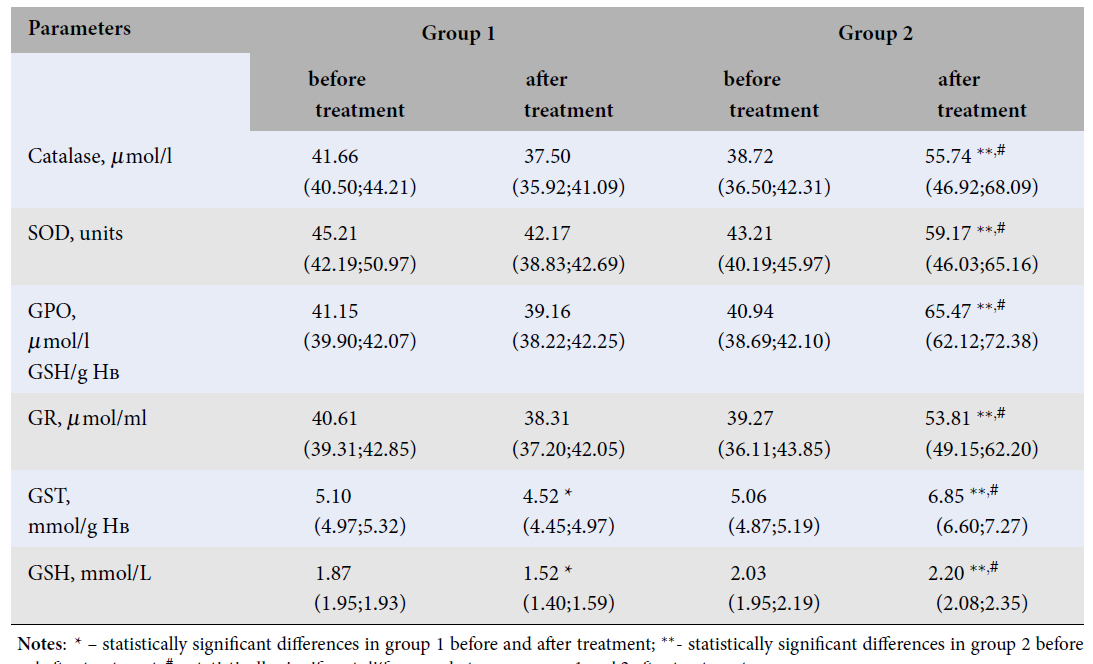Impact of Antioxidant Therapy on Lipid Peroxidation and Venous Hemodynamics in Women with Pelvic Venous Incompetence
DOI:
https://doi.org/10.15419/bmrat.v11i3.874Keywords:
women, pelvic venous incompetence, antioxidant treatment, lipid peroxidation, antioxidants, phlebohemodynamicsAbstract
Introduction: Pelvic varicosity, a subset of pelvic venous incompetence (PVI), is considered a multifactorial, chronic disease with a progressive course. One effective therapeutic approach may be the use of drugs that inhibit oxidative stress (OS) reactions. The aim of this study was to evaluate the effect of an antioxidant complex on the state of the lipid peroxidation system and venous hemodynamic parameters in the treatment of patients with pelvic varicose veins.
Methods: One hundred fifty patients with PVI were divided into two groups of seventy-five each, comparable in basic characteristics. Treatment for both groups included standard therapy with one of the venotropic drugs for 60 days. Additionally, the patients in the second group received an antioxidant complex application (ACA) for 30 days (one course), with a total of three courses over two months. Spectrophotometric and immunoenzymatic research methods were used.
Results: In patients with PVI, the application of an antioxidant complex in combination with baseline venotropic therapy resulted in a statistically significant decrease in levels of LH, CDs, TBARs, and an increase in Catalase, SOD, GPO, GR, GST, and GSH after treatment. Additionally, there was an increase in blood flow velocity in varicose pelvic veins (iliac, ovarian, and arcuate), as well as a decrease in the duration of retrograde discharge to 0.3 cm.
Conclusion: The use of antioxidant drugs (superoxide dismutase, acetyl glutathione, astaxanthin) in combination with venotropic therapy for the treatment of PVI significantly improves the indices of the lipid peroxidation-antioxidant defense system and venous hemodynamics in the pelvic organs of this patient cohort. The advantages of this complex treatment are evident both in comparison with the data before treatment and with the data from patients on venotropic therapy alone.

Published
Issue
Section
License
Copyright The Author(s) 2017. This article is published with open access by BioMedPress. This article is distributed under the terms of the Creative Commons Attribution License (CC-BY 4.0) which permits any use, distribution, and reproduction in any medium, provided the original author(s) and the source are credited.
